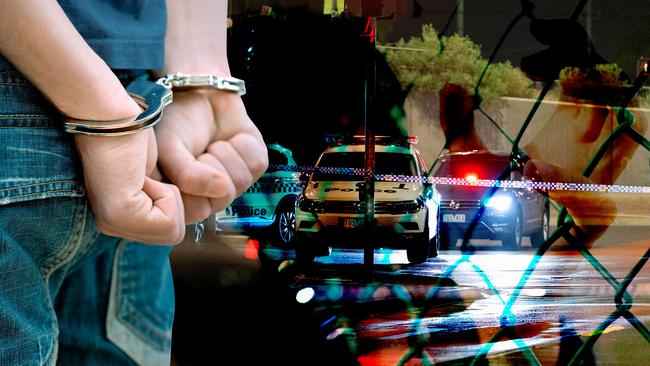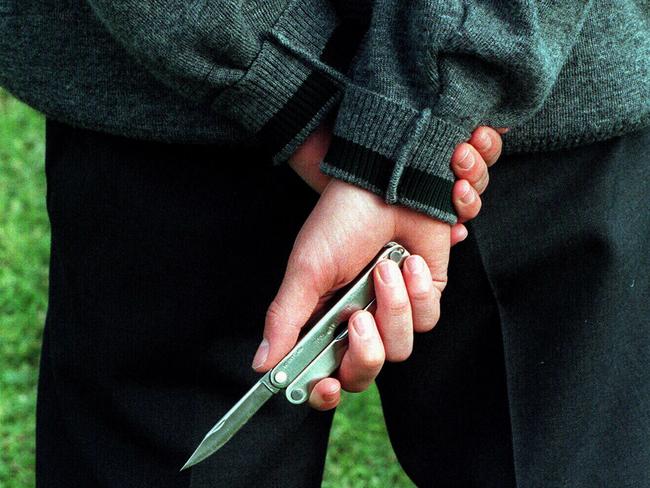Rule: Youth crime has become a brutal and dangerous epidemic
Nobody can say when and how the youth crime crisis will end. Maybe only when the victim of a serious crime lawyers up and finds a loophole to sue the state, writes Andrew Rule.

Victoria
Don't miss out on the headlines from Victoria. Followed categories will be added to My News.
It was Hemingway who said you go broke slowly at first — then all at once. The same applies to youth crime. It has been building under our noses for a decade but, now the levee has broken, suddenly we’re swamped.
This website’s Shannon Deery uncovered damning figures during the week that prove the rising tide of youth crime isn’t just “perception,” which is the dummy that shifty politicians, idealistic academic lawyers and cynical opportunists have tried to sell us for years, sometimes with the help of senior police massaging the figures.
But police on the beat and the street are now singing a much different song. We could almost call it “truth telling.”
The uncomfortable truth is that “agg burgs” committed mostly by teenagers have jumped by nearly 1000 per cent in a decade. Each offence being a frightening home invasion, often by armed and menacing young thugs.
For this reporter, the relentless rise of rampant youth crime was driven home in a few hours last Wednesday. Driving back to the city from the distant bush hideaway of an old murder suspect, there was time for telephone conversations with a string of callers.
Surprisingly, or perhaps not, each one raised youth crime without prompting.
Caller number one, an ex-detective angered by the ugly violence of “anti-violence” protesters at Docklands, said how young many of them seem, and how their clear contempt for authority and the community is shared by hundreds of youth offenders.
Caller two mentions a friend’s son being drugged and mugged — waking up in an inner suburban laneway missing his sneakers, phone and credit cards.

Caller three: a woman who had earlier arranged to discuss a member of the Pettingill criminal family has to cancel the interview. Why? Because she is visiting her adult son (a social worker) in hospital after he was stabbed by rampaging youths.
Back in the office at noon, a work colleague tells me a family friend from England had his camper van stolen at the point of a machete and trashed last week. That was near Newcastle in NSW, but the victim has reached Victoria still shaken after his wake-in-fright moment, not surprising given the robbers had attacked after midnight, forcibly taking his keys and leaving him to fend for himself, barefoot in the dark.
Around 2pm that same day, I mentioned this series of “coincidences” to an old friend and he immediately added his own story: he was in a Williamstown store recently and watched a gang of youths brazenly steal armloads of goods and walk out.
When he alerted the shop staff, they were resigned about it. They’d been told not to do anything, they said. Too dangerous — not just literally, as in personal injury, but there’s the risk of being branded a reactionary or a racist for accurately describing offenders for police and in court.
The store was tired of calling police who were tired of taking repeat offenders in front of magistrates who were tired of bailing the same teenagers again and again … but still doing it because those are the rules, written and unwritten.

Turn on the radio news later the same day and one item is veteran criminal psychologist Tim Watson-Munro warning that Melbourne’s youth gangs are heading the way of the American street gangs like the Bloods and the Crips: organised, brutal, dangerous and out of control.
Just a few years ago, the usual critics sneered and jeered at the warning signs that youth crime was on the rise in Melbourne. Some now admit they were wrong. Others have gone quiet. Only the foolhardy still insist that more “compassion” and taxpayers’ money will fix everything.
Of course, youth crime has always existed. But now it’s an epidemic, overstepping what reasonable citizens can take — and taking its toll in fashionable inner suburbs where the chattering classes live and work. It’s no longer happening to someone else. Everyone knows someone who’s a victim.
Earlier in the week, someone inside the system gave this reporter a jarring insight into its workings. Or, rather, how it doesn’t work.
Those inside the youth justice system can’t afford to tell the truth publicly because the truth is too close to home, too close to policies and attitudes that have become untouchable, one of the sacred cows of modern government.
It seems the system that’s so soft on car thieves and home invaders reacts savagely to whistleblowers. So let’s just say that this detailed message is from someone with first-hand knowledge of the bail justice system.
The whistleblower says the main reason that young offenders get bail repeatedly is that trainee bail justices are instructed to avoid remanding certain groups in custody unless it’s absolutely unavoidable. Young offenders are one of the groups that some cynics privately describe as “freckled ducks” — meaning a protected species, virtually above the law, not to be caged under any circumstances.
This leads to some disturbing results. At a recent late night bail hearing, a male teen routinely applied for bail — and routinely got it, despite having eight pages of closely-typed prior offences.
This kid might be young, but the court heard his criminal history includes aggravated burglary, armed home invasion, carjacking, assault and theft. Police alleged that on some nights his crew stole multiple cars, broke into multiple homes and threatened occupants with machetes and knives.
According to the whistleblower who saw exactly what happened, the teen could not provide any compelling reasons or exceptional circumstances to support the bail application, and clearly posed an obvious risk to the community.
He was remanded in custody that night pending a children’s weekend court hearing next morning … only to be put back on the street yet again by a jaded magistrate.
The insider was watching the television news the following night and saw footage of a familiar figure. The face was obscured but the figure, gait and clothes were easily recognisable. It was the same youth, arrested the second time in 48 hours in relation to similar alleged offences.
Alleged offences, of course, that could so easily end in tragedy, and probably will some night as this pathetic parody of justice plays out on our streets and in our homes.
Nobody can say when and how it will end. Maybe only when the victim of a serious crime — committed by a repeat offender on bail — lawyers up and finds a loophole to sue the state for a massive amount.
Perhaps then the authorities will find the grit to tackle something now harming so many of us.
Originally published as Rule: Youth crime has become a brutal and dangerous epidemic



